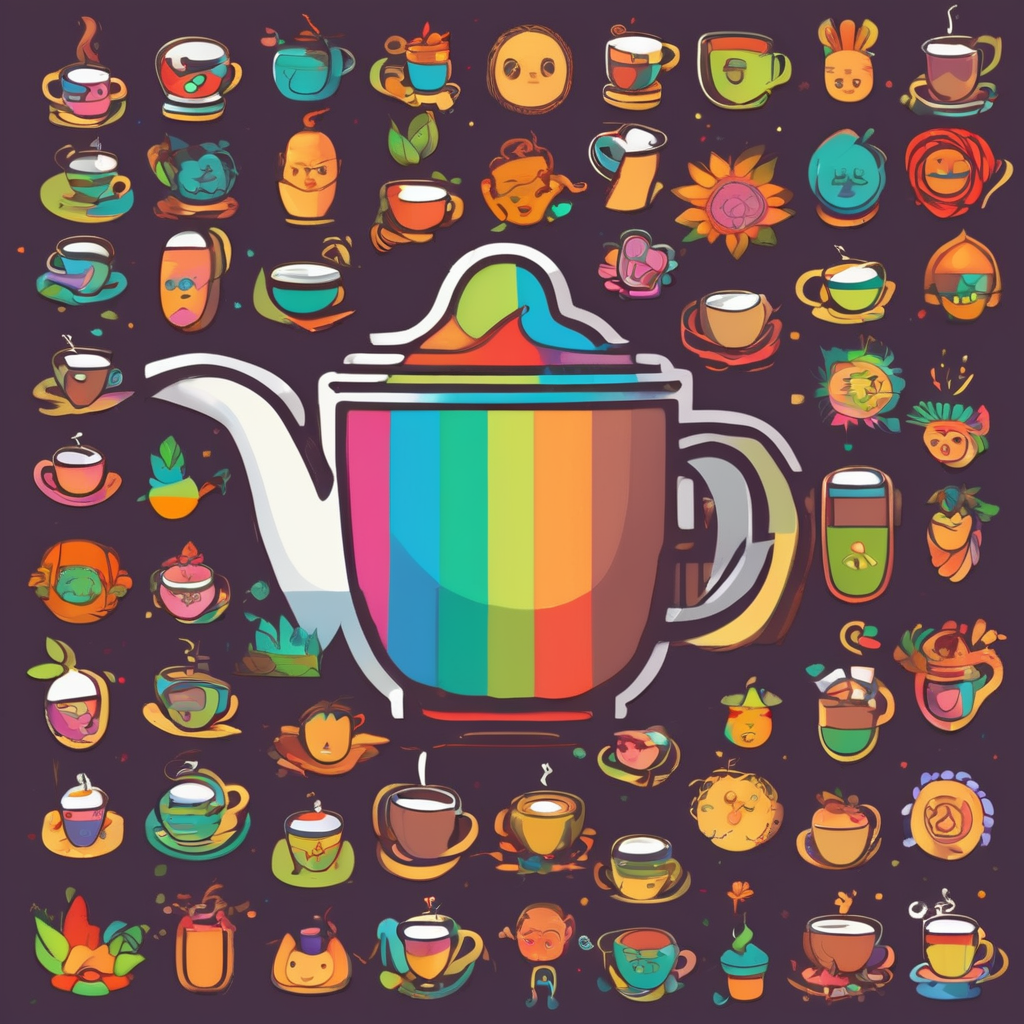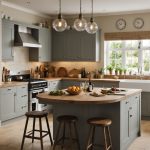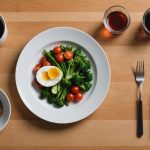The Psychology of Color in Kitchen Design
Understanding color psychology is crucial in kitchen design, as it helps create spaces that evoke desired emotions and moods. Each color can influence the atmosphere and emotional impact of your kitchen, potentially altering perceptions and experiences within it.
For example, warm colors—reds, oranges, and yellows—are known to stimulate appetite and energy levels. These vibrant hues can make a kitchen feel welcoming and lively, encouraging social gatherings. On the other hand, cool colors—blues, greens, and purples—tend to invoke calmness and relaxation, creating a serene dining environment perfect for unwinding during meals.
Also to read : Discover the Top Digital Nutrition Scale for Perfect Macronutrient Tracking in Your Diet-Friendly Kitchen!
The choice of colors within a kitchen can not only change its visual perception but also affect how those using the space feel. Neutral colors, such as whites, greys, and beiges, provide versatility and often evoke feelings of comfort and balance. These tones can be combined with accent colors to enhance the aesthetic while maintaining a soothing ambiance.
In essence, selecting the right colors involves understanding their emotional impact. A well-thought-out color scheme can transform the kitchen from a mere culinary space into a dynamic environment that aligns with the desired emotional and functional needs.
In parallel : Revamp Your Cooking Space: Discover the Advantages of a Central Vacuum System for a Spotless and Allergen-Free Kitchen
Specific Colors and Their Associated Moods
Understanding color meanings in kitchen design can significantly influence the space’s emotional impact. Each color evokes specific emotional responses that can alter how we perceive and feel in the environment.
Warm Colors and Their Effects
Warm colors, such as reds, oranges, and yellows, are known for their ability to create a lively and inviting atmosphere. These colors increase energy levels and stimulate appetites, making them ideal for kitchen cabinets where social interaction and vibrant activity are encouraged. When selecting warm shades, consider softer hues like peach or amber for a friendly, welcoming feel.
Cool Colors and Their Effects
Cool colors like blues, greens, and violets tend to promote tranquility and restfulness. Kitchens with these hues can become serene havens where one can relax and enjoy calm meal experiences. Consider pale blue or mint green cabinets to enable a soothing environment that reduces stress and encourages thoughtful dining.
Neutrals and Their Versatility
Neutrals, including whites, greys, and beiges, provide a classic canvas for kitchen design. Their emotional neutrality offers a balanced feel, easily enhanced by contrasting accent colors. Opt for combinations like grey with bold hooks of navy or mustard for a sophisticated look that fuses cool relaxation with lively warmth.
The Impact of Kitchen Cabinet Colors on Eating Behavior
The choice of cabinet colors in the kitchen profoundly influences eating patterns and the overall dining experience. Research highlights how certain hues can stimulate or suppress appetite. For instance, red and orange tones tend to promote a stronger appetite, making them suitable for spaces where social interaction and enjoyment of food are priorities. Conversely, blues and greens can create a calming effect, often leading to slower eating and a heightened awareness of satiation.
Color combinations also significantly affect social dining interactions. A harmony of warm and cool hues can enhance conviviality and conversation in dining settings. Opting for a colour palette that suits your family’s mealtime habits can transform your kitchen into a more inviting atmosphere.
Practical examples abound where adjusting cabinet colors incrementally improves dining experiences. Experimenting with combinations like a warm-toned backsplash and cool cabinets, for instance, can balance energy and tranquility, catering to varied emotional needs. Through mindful selection of cabinet colors, the kitchen transcends being just a functional area, becoming an integral part of one’s lifestyle and dining culture.
Practical Tips for Choosing Kitchen Cabinet Colors
Selecting the right kitchen cabinet colors involves more than just picking your favourite shade. It’s important to consider several practical aspects to ensure the colors enhance both the space and your emotional experience.
Assessing Personal Preferences
Understanding one’s personal preferences is vital in kitchen renovation. Your choices should reflect not only your style but also the emotional outcomes you seek. Experiment with color samples to observe how different shades resonate in the environment before committing. Consider how particular colors impact your mood and how they fit into your overall home aesthetic to achieve satisfaction and joy.
Considering Lighting and Space
Lighting plays a pivotal role in color perception. Both natural and artificial lighting can significantly alter the appearance of cabinet colors. For small kitchens, consider lighter hues to make the space appear larger, while larger spaces can handle more intense shades. Mimicking varied lighting conditions can help predict how colors will appear in different parts of the kitchen.
Seeking Expert Opinions
Consulting interior designers can provide professional insight into color trends and their implications. These experts can recommend shades that harmonize with your style while optimizing emotional outcomes. Incorporating feedback from family and friends can also influence your final decision, ensuring a balanced and pleasing kitchen environment.






